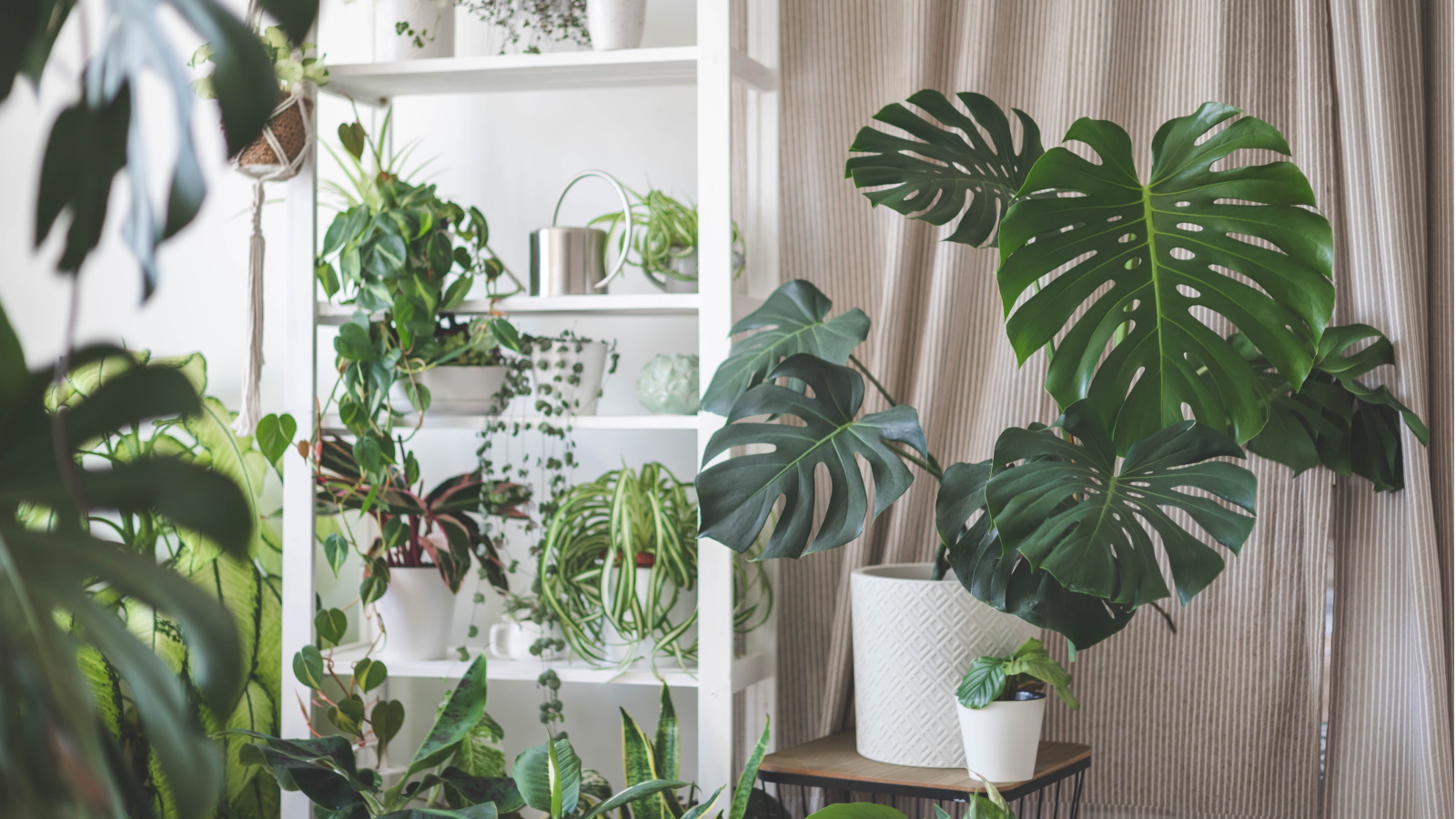
Repotting your houseplants is an essential care task to keep them happy. Moving them into a larger home gives the roots more room to grow and provides your plants with a boost of fresh nutrients.
However, it can be easy to forget to repot your plants - often a common indoor plant mistake which leaves houseplants with yellowing foliage and stunted growth. This often leads to plants becoming pot-bound, or root-bound, which refers to the plant's roots wrapping around each other multiple times until they become hard and cause the plant to become trapped in its pot.
While it's important to repot houseplants as they get too big for their containers, different plants will cope better with different growing conditions. This means there are a range of houseplants that enjoy being pot-bound for some time longer than others. If you're seeking these plants for their low-maintenance nature, but aren't sure where to get started, we have you covered. Here are a range of houseplants that don't need repotting often.
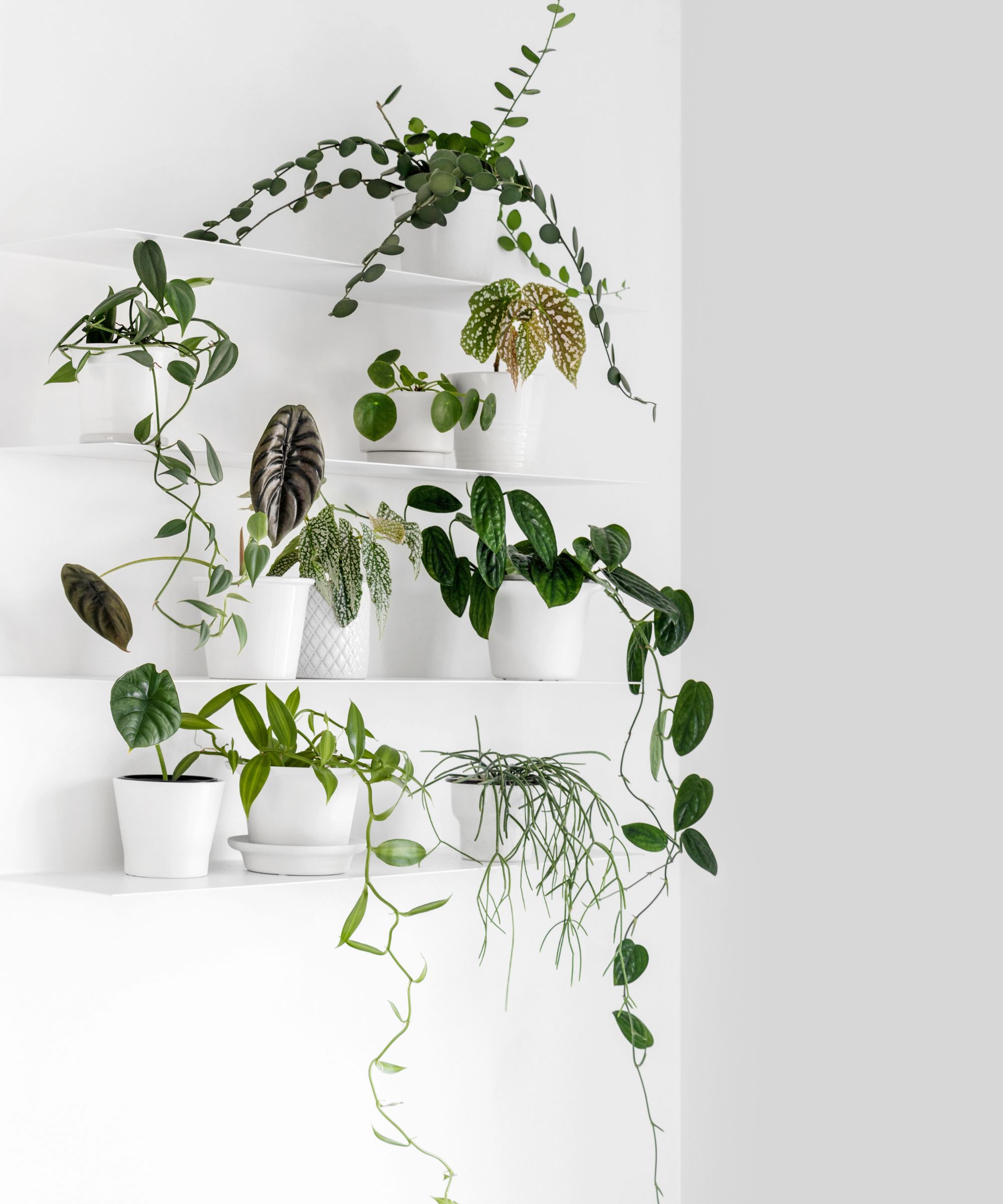
8 houseplants that like being pot-bound
It's important to note these houseplants can cope well with being pot-bound for some time, but they won't necessarily remain happy in the same sized pot forever. Always watch out for things like roots emerging from drainage holes and yellowing foliage as signs your plant needs a bigger home. Nevertheless, the houseplants compiled here enjoy being somewhat pot-bound and won't need regular repotting.
1. Spider plant
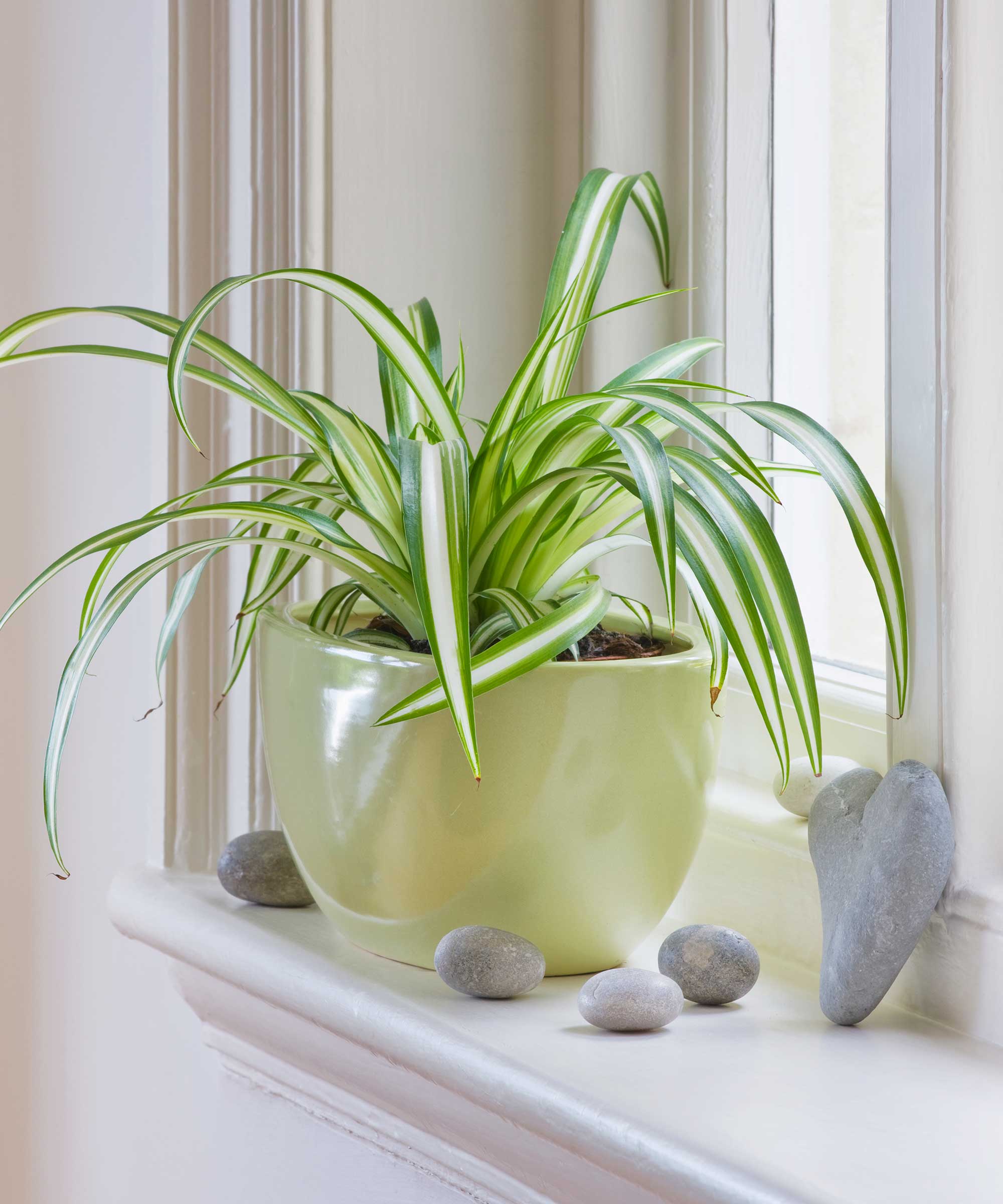
This has to be one of the easiest indoor plants you can grow at home, needing very little attention and coping well with neglect. You can get away with not repotting your spider plant for a couple of years at a time.
'Spider plants like to be root-bound and will protest when they are potted into too big of a container by dying back,' says Julie Bawden-Davis, indoor plant expert at Healthy Houseplants.
When spider plants live in a pot too-large, they may suffer from houseplant root rot as the potting soil takes longer to dry out. Even when living in a smaller pot, these plants will produce plenty of baby plants so you can easily propagate spider plants from cuttings.
'Repot when roots are coming out of the drainage holes and water rushes through the pot quickly,' Julie advises.
When your spider plant starts turning yellow, it's time to inspect the roots and see if it needs to be placed in a bigger pot.
2. African violet

It might surprise you that even some indoor flowering plants can cope with being pot-bound. African violets are some of the hardier flowering houseplants you can grow.
'African violets like to be snug in their pots,' notes Lisa Eldred Steinkopf from the Houseplant Guru. 'Yet, because they drop their lower leaves, they will form long stems,' she adds.
When your African violets start to shed their leaves, or your African violets start drooping, and you notice the leggy growth Lisa describes, consider repotting your African violets.
'Then they need to be re-potted, burying those stems under the potting media, where they will grow new roots,' explains Lisa. 'Most standard African violets need only a 4-inch pot,' she adds.
Generally speaking, African violets will stay happy in their current pots for a year. If they've stopped flowering, this can also be an indication of their need for a larger container.
3. Jade plant
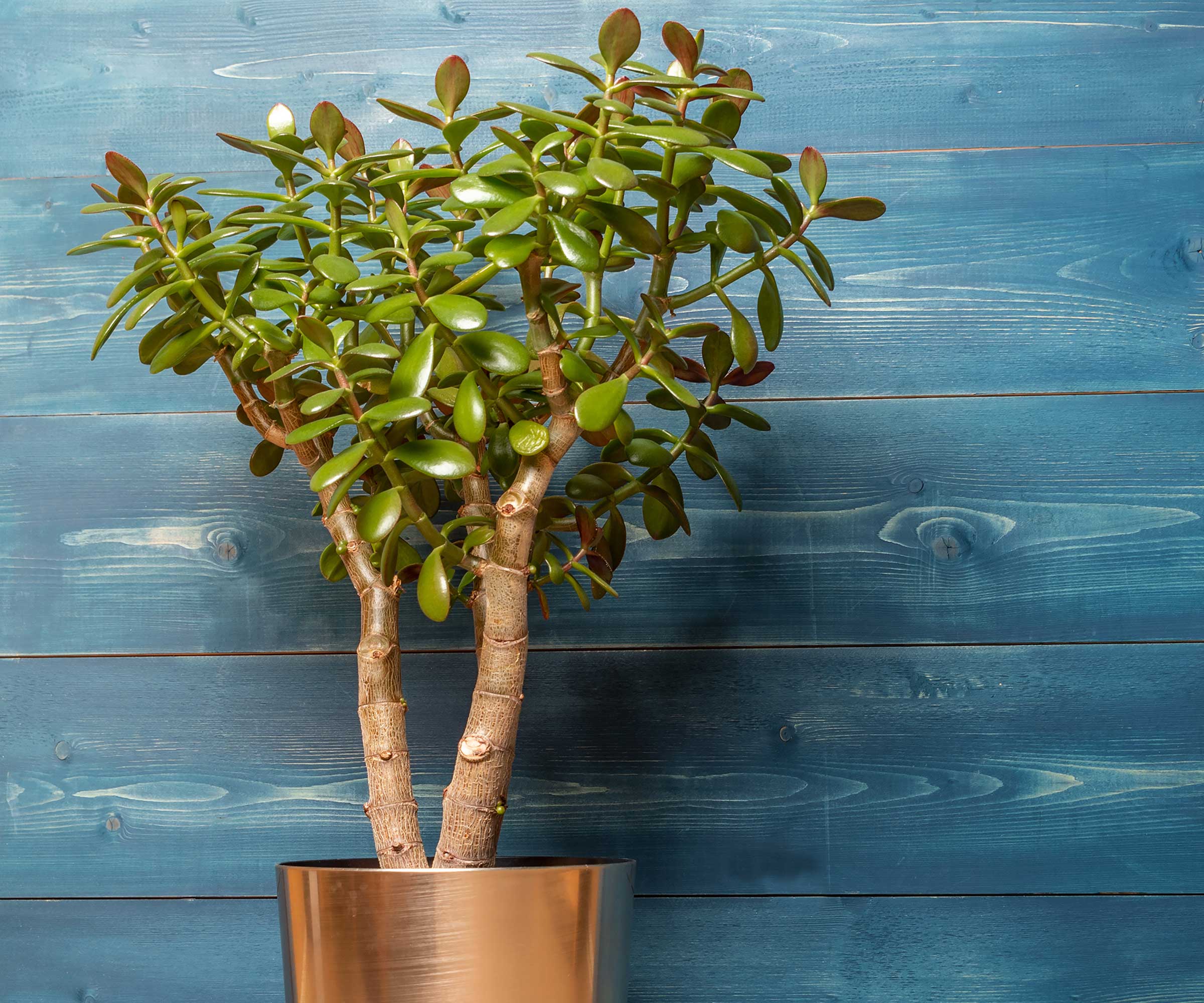
While there are many fast-growing succulents, jade plants are better choices for those looking for a slow-grower. Growing at a rate of only two inches per year, it's no surprise you don't need to repot jade plants often.
'Like many succulents, jade prefers to be root-bound. Repotting too soon will lead to too much wet soil and root rot,' notes Julie. 'Repot when water rushes through the pot when you water and the soil dries out quickly between watering,' she adds.
Potting mix drying out quickly is a common sign your plant is ready for repotting. This is because when a plant becomes too pot-bound, their roots are unable to absorb enough water and nutrients.
However, jade plants don't need watering too regularly and can be left to mostly dry between watering. You can get away with only repotting your jade plant every three to four years.
4. Alocasia
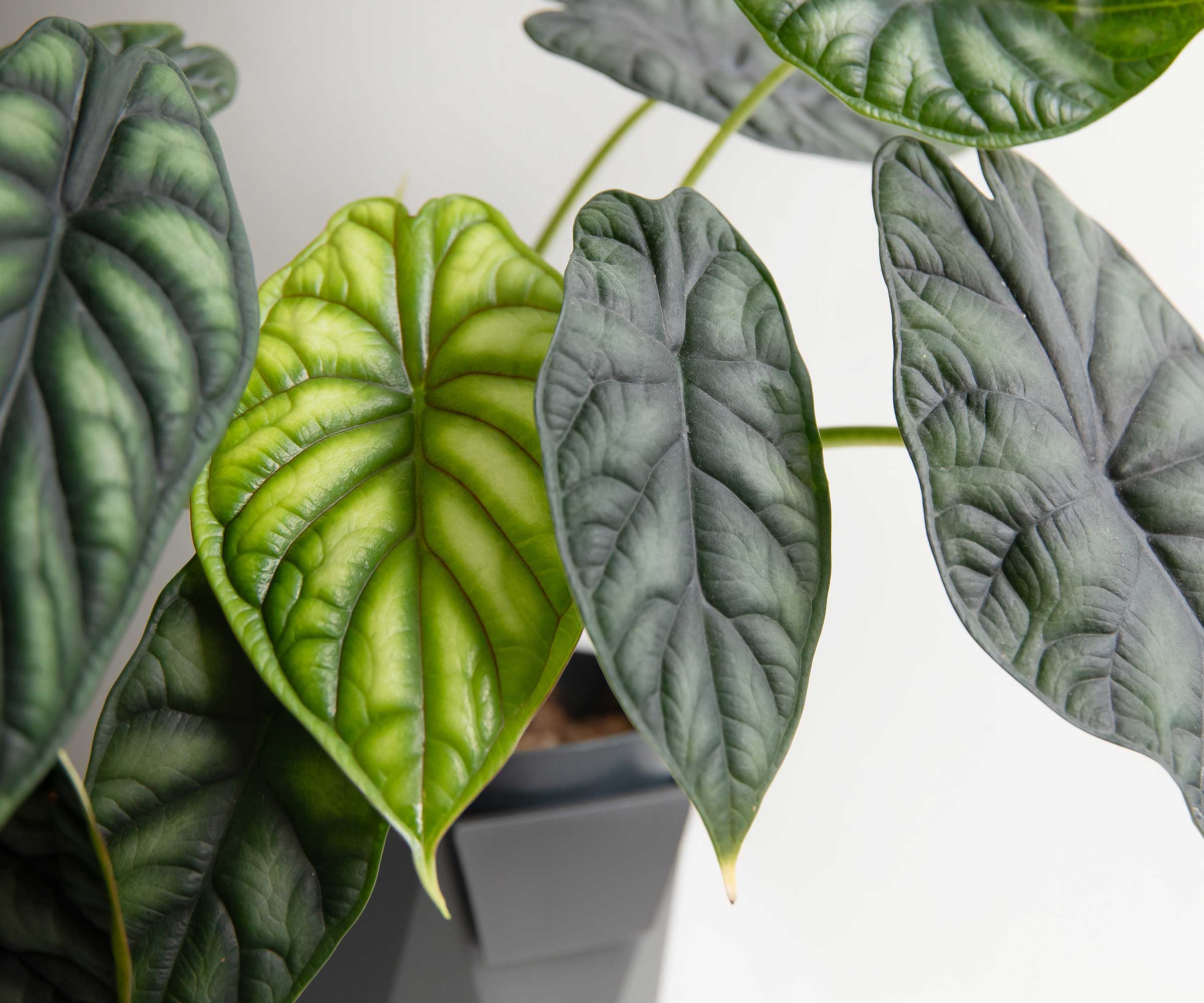
Another popular low-maintenance indoor plant, and one that also does well as an indoor low-light plant, alocasias often do best when growing in tighter conditions.
'Though these are tropical indoor plants. alocasias grow better on the root-bound side,' notes Julie.
In fact, alocasias may droop when repotted into a container too-large, due to issues like root rot and shock. Being slightly pot-bound often indicates a healthy root system for these plants.
You only need to repot alocasias every 18 months on average. 'Repot when watering doesn’t seem to moisten the soil sufficiently,' says Julie.
5. Hoya
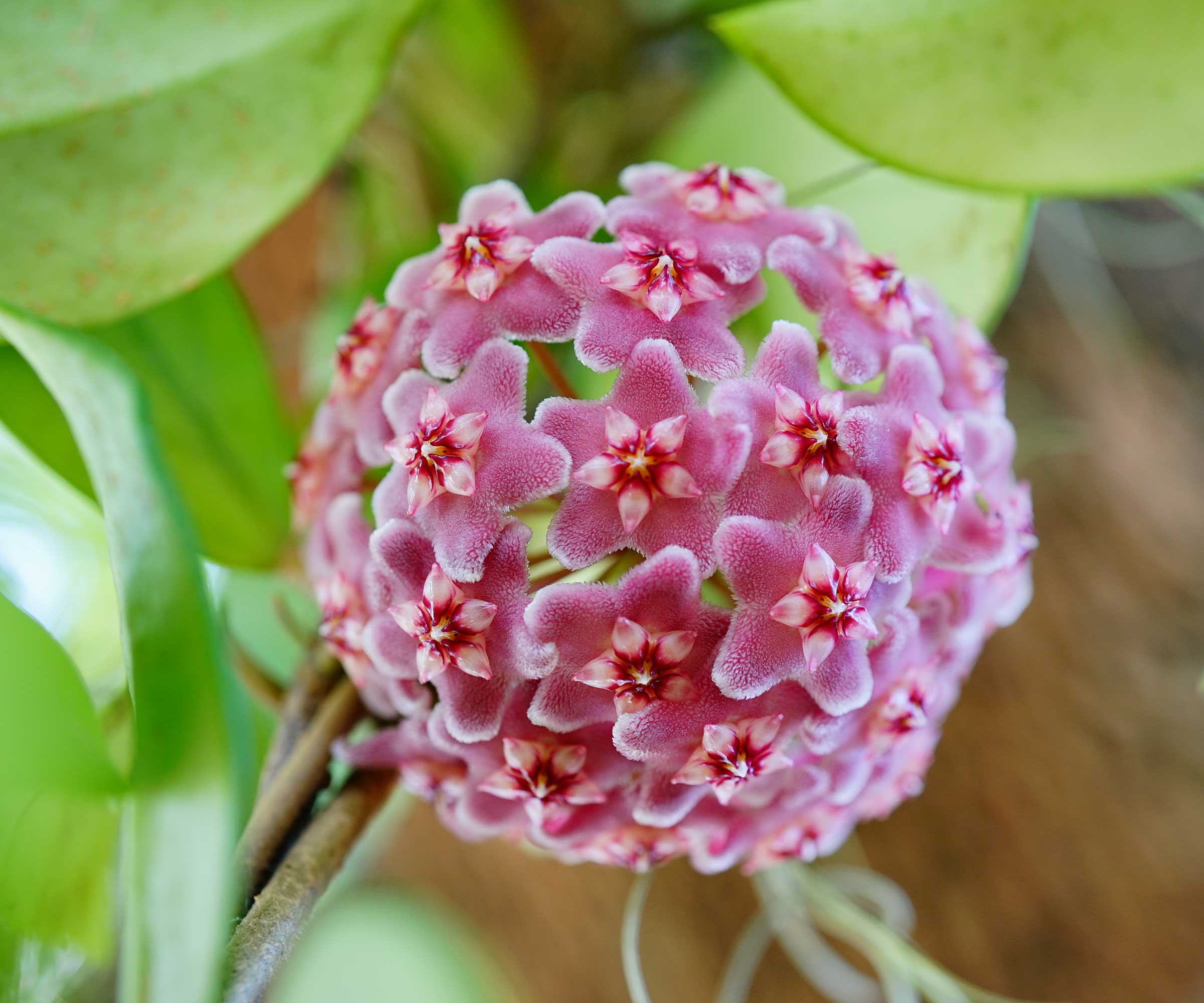
If you're after a plant that offers beautiful indoor blooms and doesn't need too much attention, it's worth considering hoyas. These unique plants are native to southeast Asia, Japan and Taiwan, and can live in the same pot for as long as five years.
'Hoyas like to be snug in their pots. They often wait until their roots fill the pot to initiate flowering,' explains Lisa.
So, if your hoya isn't flowering, it might just be because it isn't mature enough yet or you've repotted it too soon. 'If they're up-potted too frequently they may not flower well,' says Lisa.
It's best to wait until your hoya's roots are poking out or the soil isn't absorbing water well to repot your plant.
6. Snake plant
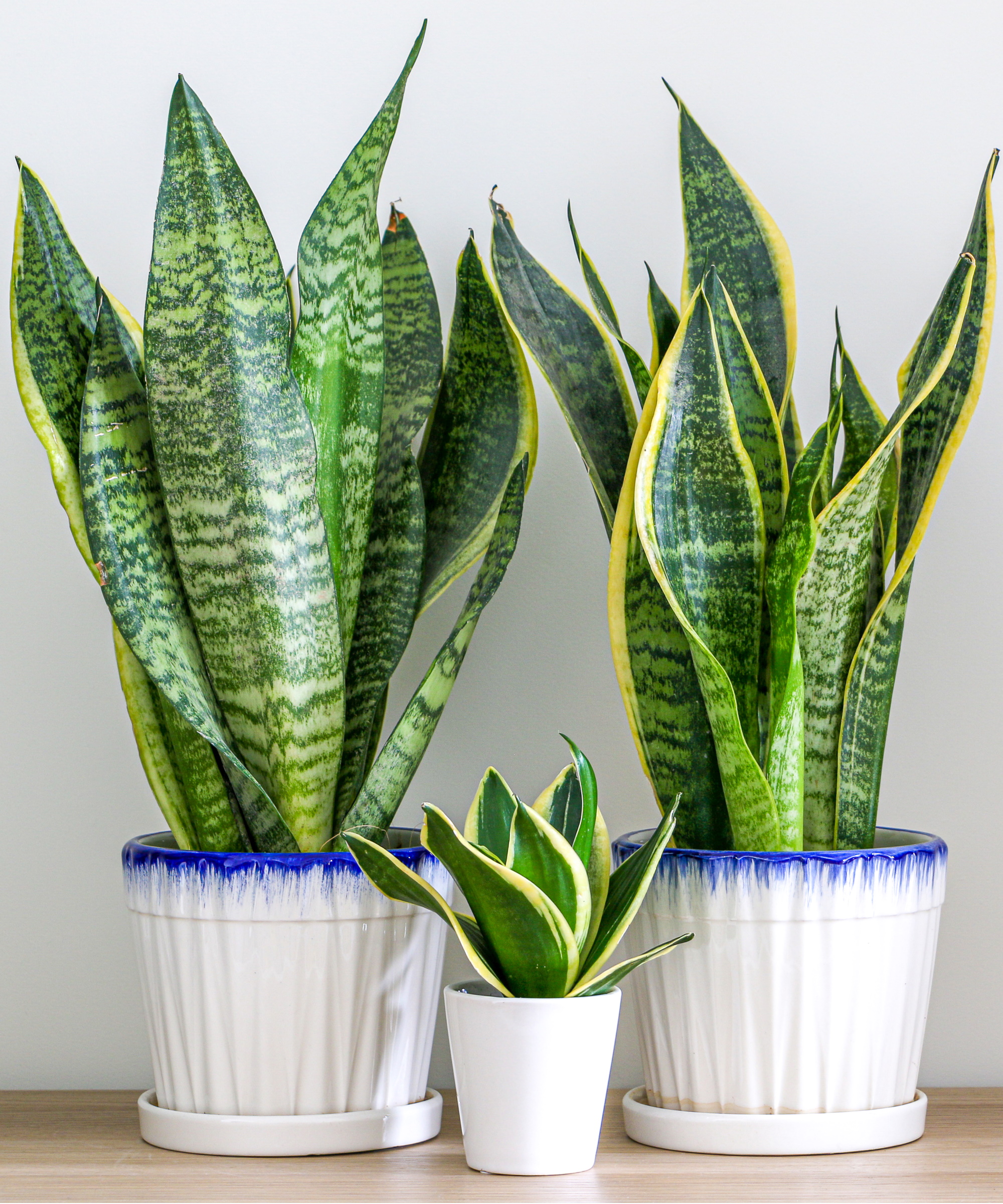
This is a classic among the best indoor plants and one many choose as a bedroom plant for its air-purifying qualities. Caring for a snake plant is incredibly easy, including the lack of repotting it needs.
'Though not a true succulent, snake plant is much like a succulent in that putting this plant into too much wet soil will quickly lead to root rot, so it is best to let the plant remain root-bound until it becomes top-heavy and water rushes quickly through the soil, leaving the plant lacking water,' explains Julie.
Although, it is important to repot your snake plant as needed. 'Snake plants do have large rhizomatous roots. If in full sun and healthy the plant will break a pot with its roots,' warns Lisa. 'Usually, snake plants aren’t given enough sun to do this, as they are touted as low-light plants,' she adds.
7. Christmas cactus

Both Christmas cactus and Thanksgiving cactus can cope well with not being repotted often. These plants are very similar, but can be differentiated by the shape of their leaves and time of year they flower, indicated by their names.
'If repotted too often, these cacti may not flower well. They will put energy into filling the pot with roots before it uses its energy to flower,' explains Lisa.
If you're looking to make a Christmas cactus bloom, it's worth ensuring it has grown large enough and developed a robust root system first, as Lisa indicates.
Aim to repot your Christmas cactus, or Thanksgiving cactus, every couple of years to keep it happy and healthy.
8. Kalanchoe

Kalanchoes are popular as indoor plants that flower all year round, with blooms in colors such as pink, white and orange. As a succulent, these plants tend to grow slowly and will last in a pot-bound situation for some time.
'This succulent plant prefers to remain on the root-bound side and is highly susceptible to root rot if you fail to let it remain root-bound,' says Julie. 'You want the soil to dry out between watering, which is impossible to do if the plant is in too big of a pot,' she adds.
It can be hard to know how and when to water houseplants, but the general rule with succulents is less is more. Keeping your kalanchoe in a smaller pot can help keep it at a happy moisture level and prevent it becoming oversaturated.
Aim to repot your kalanchoe every couple of years, making sure to wait until after it has finished blooming.
Shop houseplant repotting essentials
This pack of 48 plastic nursery pots are available in four different sizes so you can repot and grow a wide range of plants.
This indoor potting mix is the ideal blend for a range of houseplants, with good drainage. Use it to repot your plants.
These 6.5-inch hand pruning shears are the perfect size for pruning houseplants and smaller outdoor plants.
FAQs
How do you remove a pot-bound plant from its pot?
If your houseplant is pot-bound, you might struggle to remove it from its pot when you attempt to repot it. Some things that can help you include gently squeezing its nursery pot to loosen it and running a knife around the edge of the pot. You can also try gently twisting the plant. If you're willing to sacrifice its plastic pot, you can also use scissors to cut the pot open.
Can I cut houseplant roots?
Yes, you can cut and prune houseplant roots. Doing so can actually improve your plant's health if it has damaged roots. Likewise, you might need to cut away some roots if your plant has become root-bound. Using sharp essential gardening tools like pruning shears or scissors, simply cut away the roots, ensuring not to prune more than a third of the plant at a time - doing so can leave your plant in shock and impact its future growth.
If you're new to owning houseplants or simply want some that don't need a lot of maintaining, try growing some of these plants. When you do get around to repotting your houseplants, it's better to do so in early spring before active growth kicks in. There are also lots of houseplants that can cope with other limiting growing conditions, such as the best cold-tolerant houseplants which will do well in the chillier spots of your home.







